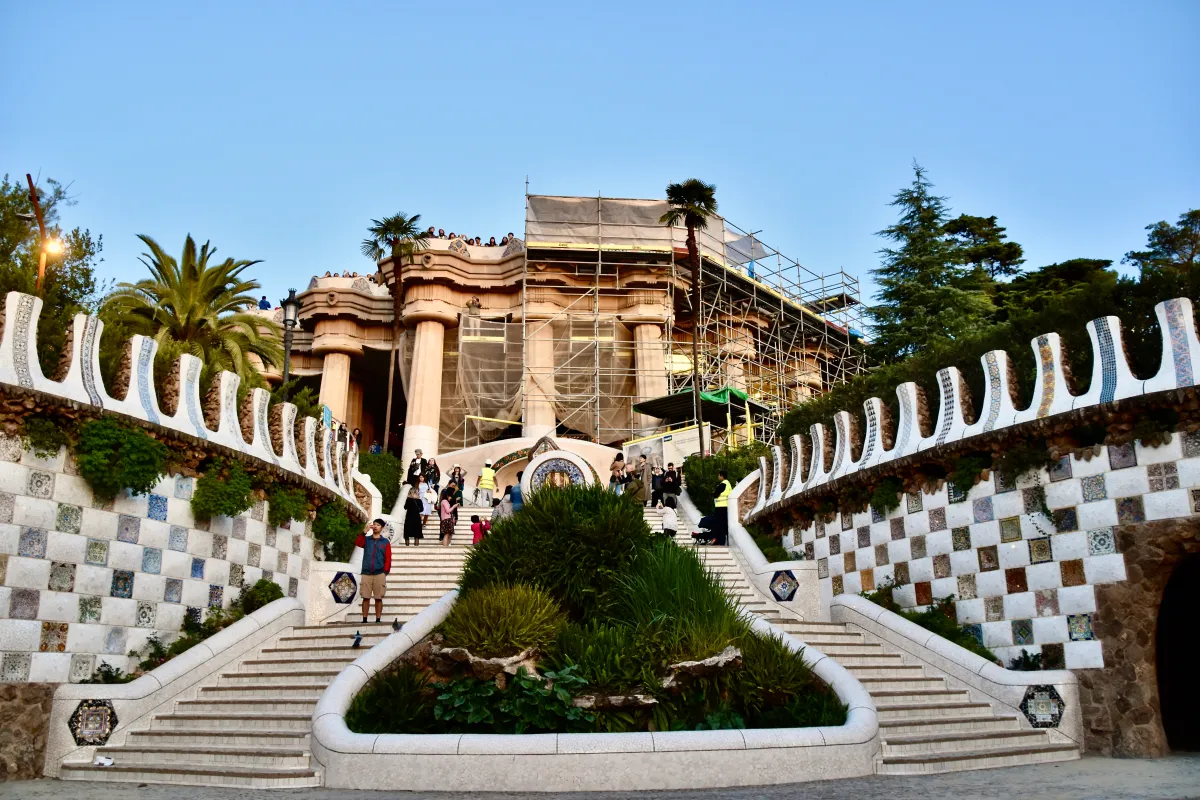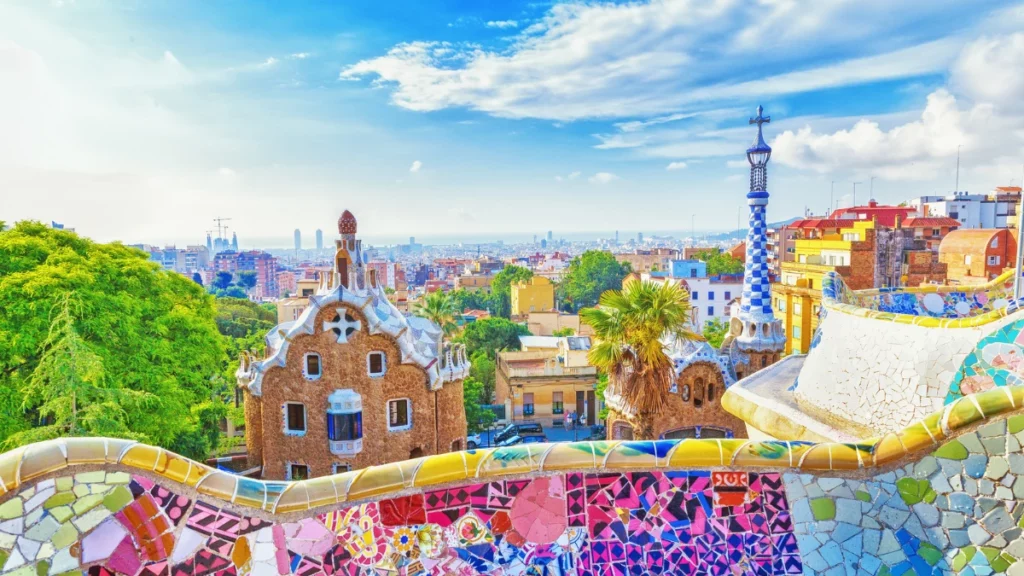
Did you know that there are no straight lines in Park Guell? Since Gaudi believed that straight lines do not exist in nature, he has used curved lines throughout Park Guell.
Or did you know that Park Güell wasn’t the first park that Antoni Gaudí worked on? As a young architect, worked for yet another park in Barcelona.
From its colorful mosaics to whimsical structures, Park Güell is filled with intriguing details and many such interesting facts, which make it a must-visit.
Let’s dive into some fascinating facts about this architectural masterpiece!
Gaudi House in Park Guell wasn’t built by Gaudi
Did you know that the Gaudí House, one of the most popular attractions in Park Guell, was not built by Gaudi?
It was built by Gaudi’s friend and assistant, Francesc Berenguer i Mestres. Antoni Gaudi signed the plans on behalf of Berenguer because his friend wasn’t a qualified architect.
Many tourists are unaware of this surprising fact about Park Güell.
Park Guell’s iron gates don’t belong here
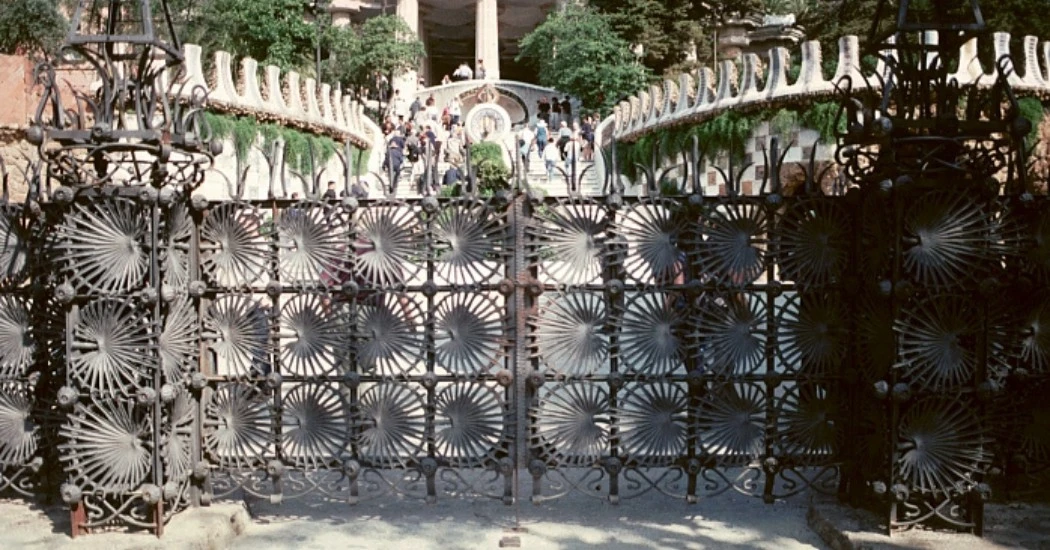
The iron gates, designed in the shape of palm leaves, weren’t part of Gaudi’s plan for Park Guell.
When Park Guell was first constructed, the gates were made of wood.
Years after Gaudi’s death, the current iron gates were brought in from Casa Vicens, the first house Antoni Gaudí designed in Barcelona.
Gaudi planned for a massive marketplace
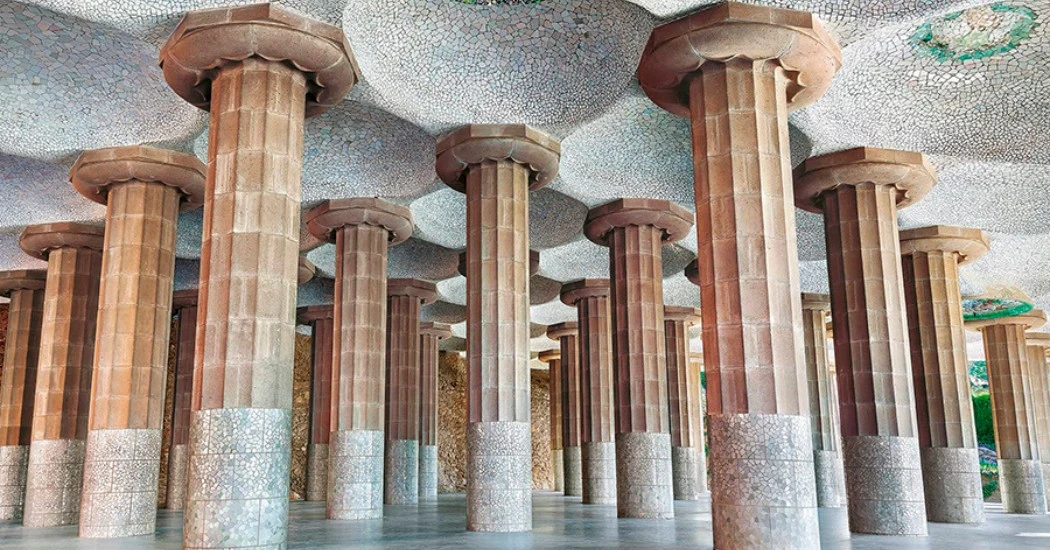
The Hypostyle Room in Park Guell, highly influenced by Roman temples, consists of 86 striated columns.
It was intended to serve as the marketplace for the gated residential complex and that proves Antoni Gaudi was a forward-thinking architect.
The Hypostyle Room is locally known as Sala Hipóstila. Just above that, is the well-known Park Guell terrace, offering panoramic views of Barcelona.
Gaudi left secret messages in Park Guell
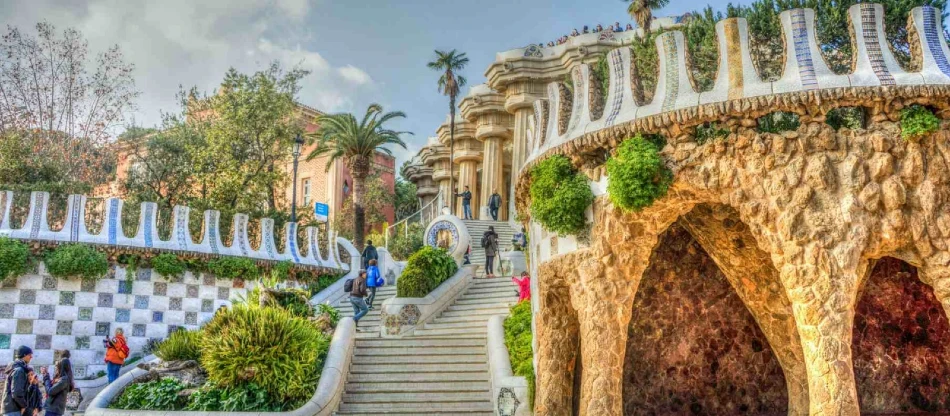
It is believed that Antoni Gaudí was a Freemason (a fraternal organization often associated with symbolism and secrecy) and is known to have left hidden messages throughout Park Güell.
Park Güell has five-pointed stars scattered throughout. The number five represents both order and chaos for the Freemasons.
It also represents the ‘five senses.’ The number five was also considered the fifth element by the Freemasons—after earth, fire, water, and air.
The Freemasons’ hierarchy had 33 levels, and therefore, Gaudi is believed to have incorporated 33 steps in the staircase at the entrance of Park Güell. Also known that he extended his use of the number 33 to Sagrada Familia as well.
On the Passion Facade, he designed a magic square where all rows, columns, and diagonals add up to 33.
However, many historians deflate the Freemason theory, saying that the number 33 represents the age at which Jesus Christ was crucified.
Recommended
Gaudi took help of naked man to design the bench
Legend has it that Gaudi shaped the bench’s curvature by molding it to the imprint left by a naked workman sitting in wet clay.
The serpentine bench runs along the terrace, providing a comfortable resting spot for tourists. The comfort of this bench is legendary—perhaps the first ergonomically designed bench in the world.
Related: Explore the ultimate Gaudi Tour in Barcelona
Park Güell offers the ultimate views of Barcelona
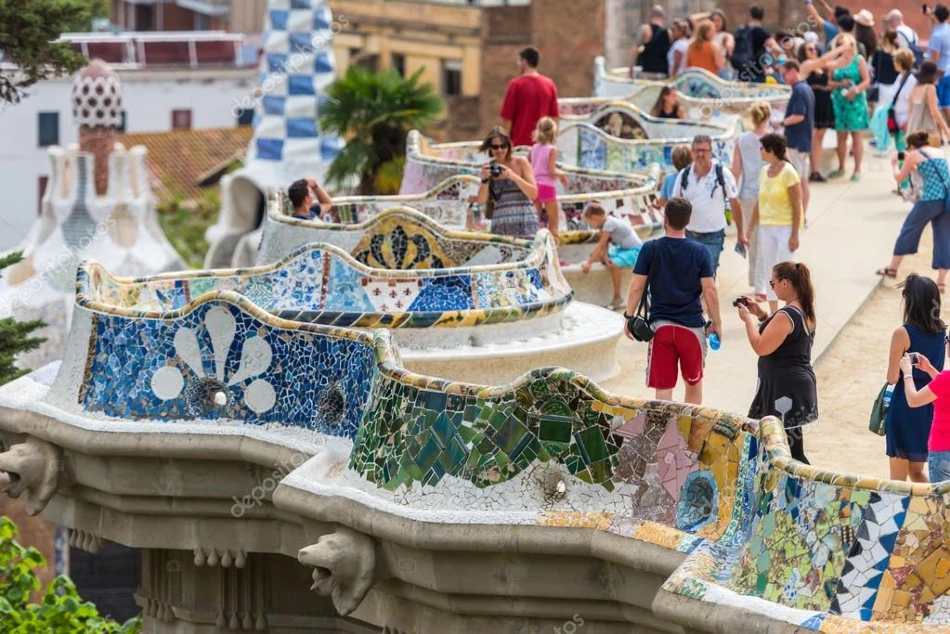
Park Güell’s most iconic attraction is its terrace, which overlooks Barcelona.
From this spectacular terrace, you can see all the way to the Mediterranean Sea. Its breathtaking vantage point makes it the perfect spot for capturing stunning photos of Barcelona.
The terrace is 110 meters long and intricately decorated with colorful mosaics. The whole terrace is supported by 86 huge, slightly angled, doric columns.
This was originally designed as an entertainment space for the residents of the complex. Gaudí called this balcony the ‘Greek Theater’ and envisioned residents watching plays from their balconies.
Related: See why Park Guell is a must-visit
95% of Park Guell is free
Did you know that when you buy tickets for Park Güell, your ticket grants access to only 5% of the park?
You can explore the remaining 95% of the park for free.
The paid section of Gaudí’s park is called the Monumental Zone and includes the entrance area with the colorful salamander, Casa del Guarda, the balcony with a curved bench, and the market hall. You can buy tickets to Park Güell’s Monumental Zone to explore these iconic areas.
To ensure the best experience for visitors exploring Gaudí’s masterpiece, only 400 people are allowed inside the Monumental Zone every half hour.
Gaudi transformed a mountain into a green oasis
Park Guell, located on a mountain, is full of vegetation now. But that wasn’t always the case.
When Eusebi Guell commissioned Antoni Gaudi to build Park Guell, the mountain was called Muntanya Pelada, meaning ‘bare mountain,’ due to its lack of vegetation.
During the 14 years that Gaudi worked on this project, he introduced a variety of plants and Mediterranean vegetation to the mountain.
Over time, these plants and trees adapted to their surroundings and thrived.
Some of the plants and trees Gaudi introduced to the bare mountain include pine, eucalyptus, palm trees, carob trees, oaks, olive trees, fig trees, cork oaks, cypresses, and almond trees.
Over time, this flourishing flora encouraged the return of wildlife turning it into a green oasis.
Park Guell: Three entrances, three ways to explore!
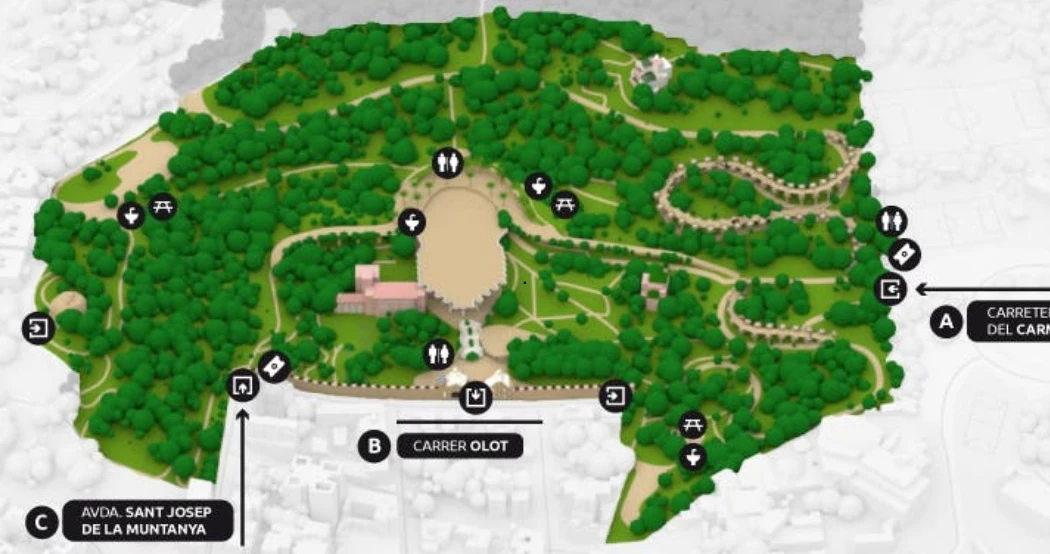
Park Guell, being magical inside—it even gives you three entrances to get inside its vibrant architecture.
The main entrance from Carrer d’Olot is the most beautiful. The other entrances are located on Carretera del Carmel and Sant Josep de la Muntanya.
Unless you are visiting as a group traveling by coach, we suggest entering via the main entrance. Visitors traveling to Park Güell by coach prefer the entrance on Carretera del Carmel due to its designated coach parking area.
Check out the Park Guell Monumental Zone map.
Gaudi set out to impress from the start
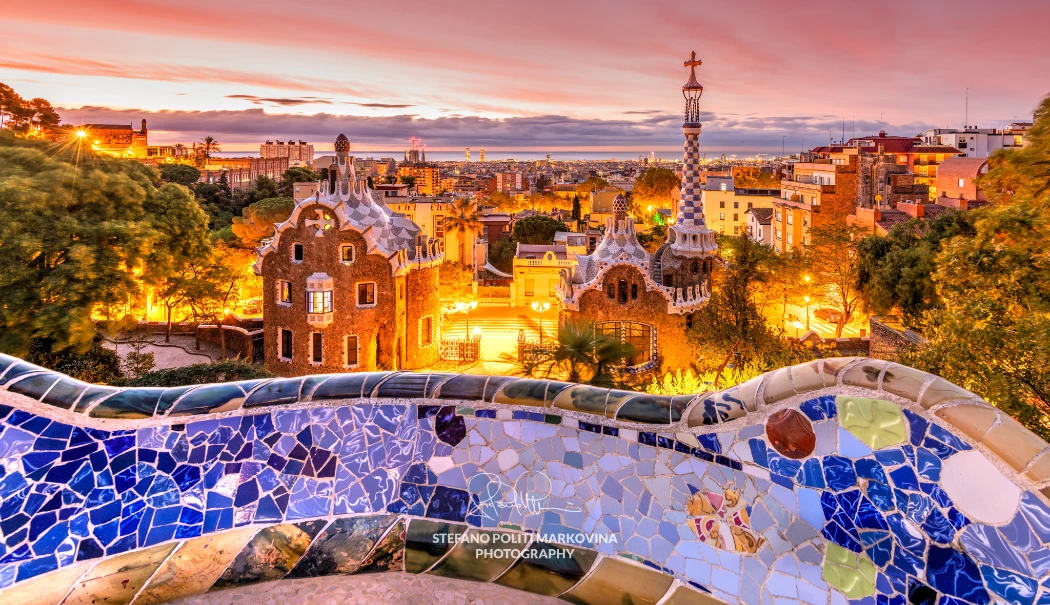
On both sides of Park Guell’s main entrance stand two imposing buildings.
The building on the left served as a porter’s lodge, complete with a waiting room and telephone booth.
The building on the right served as the porter’s residence, which became known as Casa del Guarda. It is now part of the Barcelona History Museum. The story of Hänsel and Gretel was the inspiration for these two buildings.
Admission to Casa del Guarda is now included in the Park Güell entrance fee, so you don’t need to buy separate tickets.
Related: Not sure whether to visit Park Guell or Palau Guell? Here’s everything you need to know to make the best choice.
Park Guell’s Salamander is Barcelona symbol
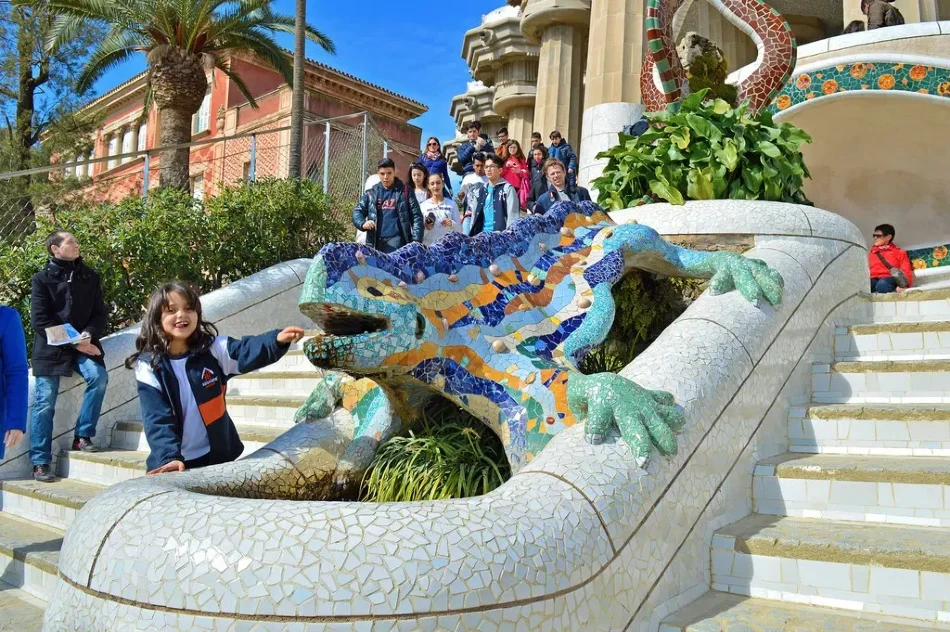
A colorful salamander sits prominently on the staircase at the entrance of Park Güell, serving as one of its fountains.
This multicolored mosaic salamander called ‘El Drac’ (the dragon) is Park Guell’s most popular icon.
Measuring 2.4 meters in length, crafted from bricks and adorned with vibrant trencadis mosaics, this salamander seems to guard Park Guell.
Gaudí’s loved animals and it shows
It is no secret that Gaudi loved nature. As a result, Park Guell features many animal representations. Some of the finest examples of Gaudi’s trencadis technique can be seen on these animals.
Salamander
Your tour of Park Guell will start with the salamander at the entrance (some also call it ‘the dragon’).
While some believe this Salamander guards the park, other historians say it represents an alchemical Salamander, symbolizing fire.
Snake
Since Gaudi was a Catalan (a native of Catalonia in Spain), he decorated the staircase at the entrance with a snake surrounded by the Catalan flag.
Some historians believe this snake represents Nehushtan, a bronze serpent mounted on the staff of Moses.
Octopus
A large octopus rests on the ceiling of the Hypostyle Room, which was intended to be the marketplace for the residential complex. This octopus represents the water drainage system that runs through the roof.
Lions
On the outside of the balcony, gargoyles shaped like lion heads serve as water spouts. These function as part of the balcony’s drainage system.
Gaudi’s ‘footpaths’ shows he believed in loving thy neighbour
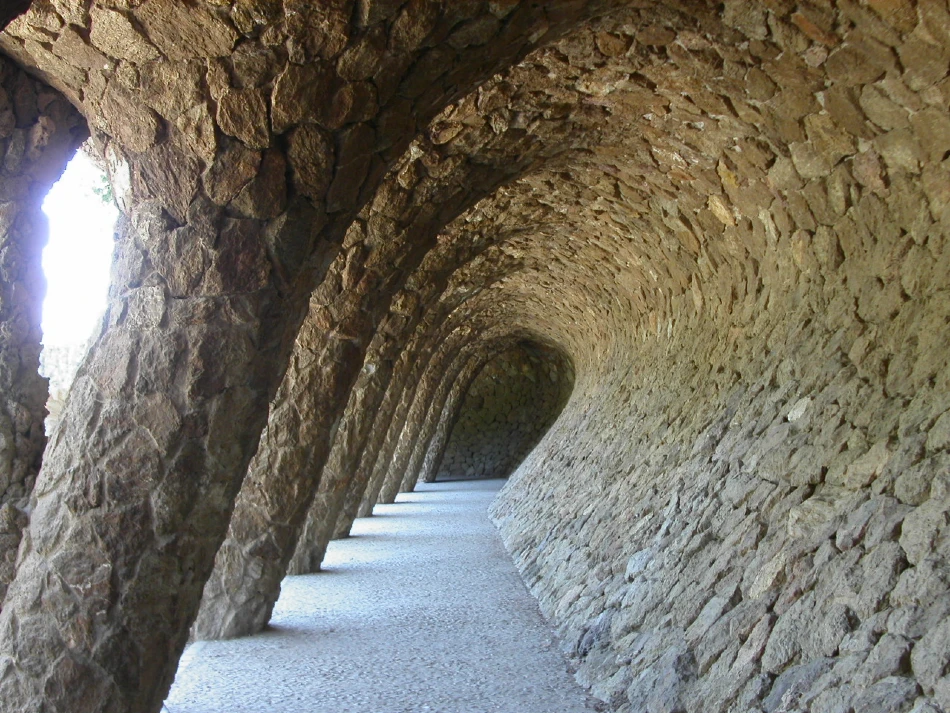
Gaudí’s team built covered footpaths designed to connect all the houses within the residential community. These covered footpaths also supported the roads above—an example of Gaudí’s architectural style, where every element served multiple purposes.
The Laundry Room Portico is one such covered arcade, named after the laundress sculpted into one of its columns. Gaudí designed each of these columns supporting the walkway, ensuring that every structure had its own unique character. He also used local stone, which helped the structures blend seamlessly into the natural landscape.
There are no straight lines in Park Guell
Gaudi believed that straight lines do not exist in nature.
Since he wanted the design to imitate nature, he used curved lines throughout Park Guell.
Gaudi’s extensive Trencadís Marvel
To add a unique and colorful touch to his work, Antoni Gaudí invented trencadis.
He first used it in the Guell Pavilions (Finca Guell), one of Count Güell’s estates in Barcelona and ensured that artisans working on Park Güell incorporated trencadís throughout the design.
Gaudi lived in Park Guell
At Güell’s suggestion, Gaudí moved into the park and lived in one of the two model homes that had been completed.
He moved into the house in Park Güell with his elderly father and niece.
He lived there until 1925, before moving to Sagrada Família, where he spent his final months until his death in 1926.
Park Guell was Gaudi’s second park
Park Güell wasn’t the first park that Antoni Gaudí worked on. As a young architect, he designed the central masterpiece—a fountain—for Parc de la Ciutadella in Barcelona. The fountain was guarded by winged dragons, which later became one of Gaudí’s trademarks in his works.
Austria contributed to Park Guell’s beauty
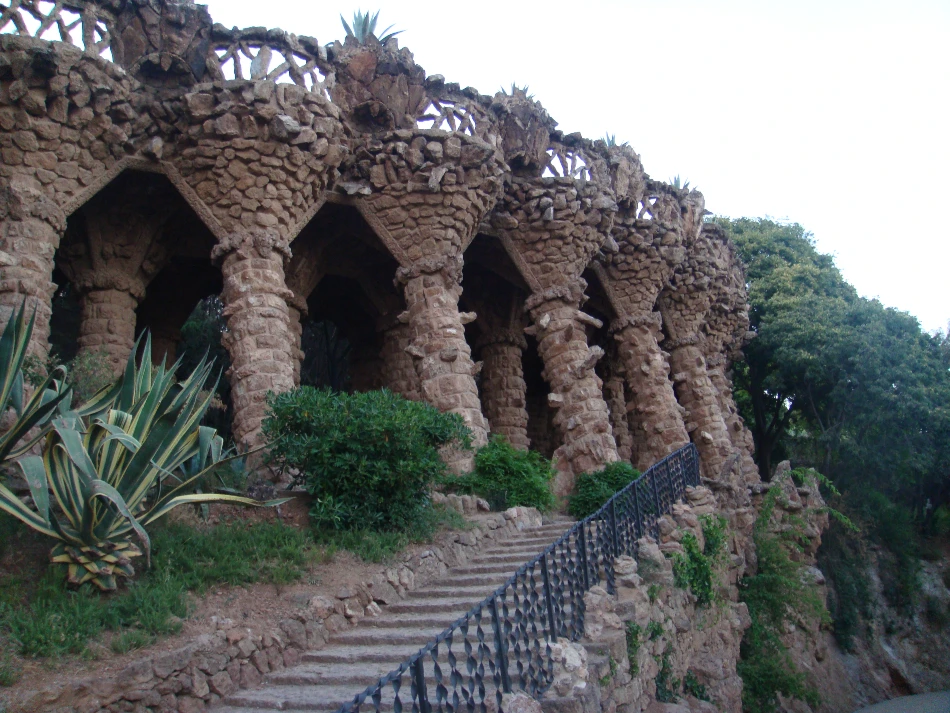
One of the zones of Park Güell ‘Austria Gardens’, wasn’t always known by this name. When Barcelona took over Park Güell, this zone was empty, so it was used as a municipal plant nursery.
However, in 1977, the Austrian government donated many trees, which were planted in this zone, leading to its name ‘Austria Gardens’.
Guell also lived in Park Guell
Larrard House (Casa Larrard) is located inside Park Güell. It was originally an 18th-century mansion and later became the residence of Eusebi Güell, the patron of Antoni Gaudí. After Güell’s death, the house was repurposed and became a municipal public school (Baldiri Reixac School) in 1931 within the park.
Although it is inside Park Güell, it is not part of the Monumental Zone, and visitors cannot enter it as a tourist attraction. However, it remains an important historical site within the park.
Only one house was sold in Park Guell
Gaudi built a model house – which is now referred to as Gaudi House Museum. – to showcase the residential complex but almost nobody came forward to book the houses.
Barcelona lawyer Martí Trias i Domènech was the only person who believed in the Park Güell project.
In 1905, he bought a house in the park, which later became known as Casa Martí Trias i Domènech.
He was the first and last person to buy a house in Park Güell.
Park Güell: A Vision Unfulfilled
Eusebi Güell, inspired by the British Garden City movement, sought to introduce this concept to Spain through Park Guell, envisioning a luxury residential estate with abundant green spaces.
In 1900, he commissioned Gaudi to design the park. However, the project faced financial and commercial difficulties and was abandoned after Guell’s death in 1914.
Despite the original plan for 60 triangular housing plots, only two houses were built.
Like the Garden City model, this residential community was designed with abundant green spaces, hence the word ‘Park’. He gave the park his own family name, creating ‘Park Güell’.
In 1922, the city of Barcelona acquired the site, transforming it into a public park, which opened in 1926. Today, Park Güell attracts around 10 million visitors every year.
When Gaudí’s met with an accident, his Park Guell connection came to his help
Many years after the Park Güell project was abandoned, Antoni Gaudí was hit by a tram while crossing the road.
Since Gaudí practiced austerity, he wasn’t wearing respectable clothes, and many failed to recognize him, assuming he was a beggar.
Alfonso, the son of Park Güell’s first buyer, recognized the renowned Spanish architect and rushed him to the hospital for treatment.
Gaudí, however, never recovered from his injuries and died a few days later.
Buy Park Guell TicketsAnd did you know, if you book this ticket online, you can save up to €1 per ticket because you avoid the on-site booking fee?
You also won’t need to stand in line. Book your tickets now and save your time!
